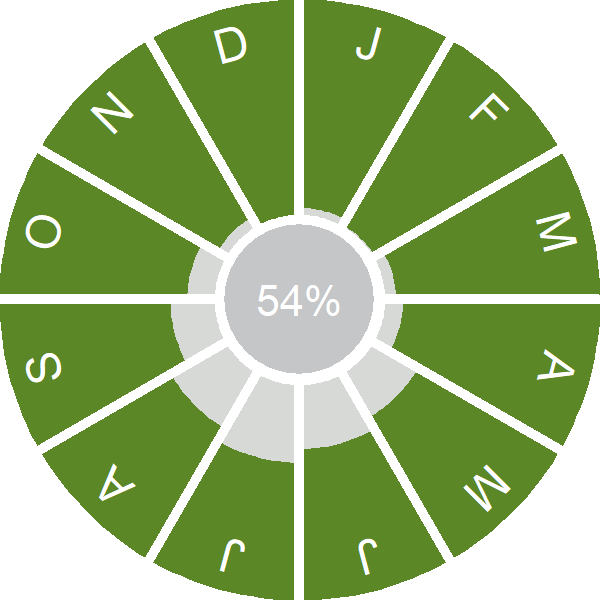Blue Tit
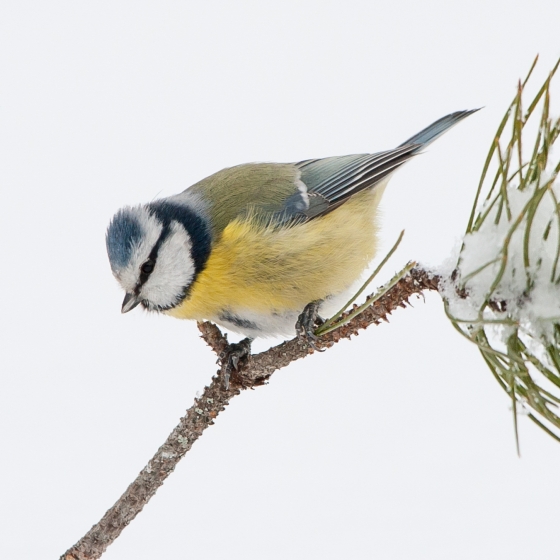
Introduction
This is a colourful little bird, and a familiar garden favourite. It is also common in woodland, hedgerows, parks and gardens.
Blue Tits have distinctive blue-green and yellow plumage and a blue cap. They regularly visit garden feeders and use nest boxes. Sexes are similar but, on average, males have slightly brighter colours than females.
The Blue Tit is a common resident breeder, widespread everywhere in Britain & Ireland except the Northern Isles and parts of the Hebrides. The UK population trend is stable, with some fluctuations.
Blue Tits often form mixed flocks with other tit species, especially in winter. In natural settings, they nest in tree holes and an average of of eight to 10 eggs once, sometimes twice, a year.
You can also read more about the Blue Tit's life during breeding season on our Blue Tit diary.
- Our Trends Explorer gives you the latest insight into how this species' population is changing.

Key Stats
Identification
ID Videos
This section features BTO training videos headlining this species, or featuring it as a potential confusion species.
GBW: Blue Tit and Great Tit
#BirdSongBasics: Blue Tit and Great Tit
Songs and Calls
Song:
Call:
Alarm call:
Begging call:
Status and Trends
Conservation Status
Population Change
Blue Tit populations have increased in abundance, with brief pauses in the long-term upward trend until around 2008, since when there has been a shallow decline. The BBS map of change in relative density between 1994-96 and 2007-09 indicates that there were minor decreases over that period in parts of England and Northern Ireland and that increase occurred mainly in northwestern, upland parts of the UK range. There has been an increase across Europe since 1980 (PECBMS: PECBMS 2020a>).
Distribution
Blue Tits are widespread breeding and wintering species throughout Britain and Ireland, absent only from the highest ground in Scotland, the Northern Isles, most of the Outer Hebrides and a few Inner Hebridean islands. They are chiefly inhabitatnts of broad-leaved woodland, though abundant in a wide range of other woodland, garden and scrub habitats. Densities are low throughout Ireland, in upland areas of Britain and in other landscapes with few woodlands such as the Fens of East Anglia. The highest densities occur in central and southeast England and lower-lying areas of Wales.
Occupied 10-km squares in UK
or view it on Bird Atlas Mapstore.
or view it on Bird Atlas Mapstore.
European Distribution Map
Distribution Change
Distribution changes in both seasons are minor, involving a few gains in marginal coastal and upland areas in Scotland and Ireland.
Change in occupied 10-km squares in the UK
or view it on Bird Atlas Mapstore.
or view it on Bird Atlas Mapstore.
Seasonality
Blue Tit is recorded throughout the year on up to 60% of complete lists.
Weekly pattern of occurrence
The graph shows when the species is present in the UK, with taller bars indicating a higher likelihood of encountering the species in appropriate regions and habitats.

Habitats
Breeding season habitats
Relative frequency by habitat
The graph shows the habitats occupied in the breeding season, with the most utilised habitats shown at the top. Bars of similar size indicate the species is equally likely to be recorded in those habitats.
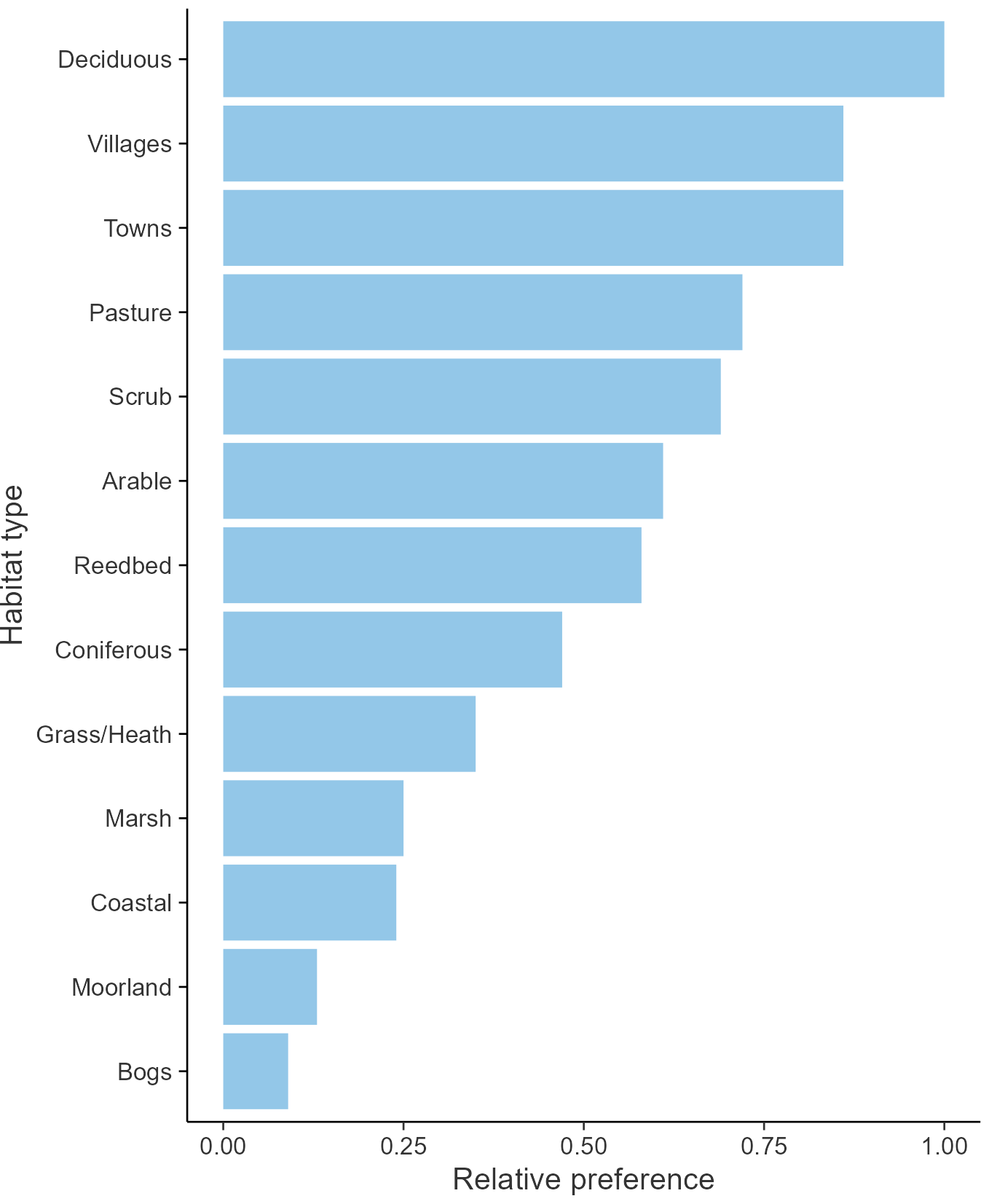
Movement
Britain & Ireland movement
Foreign locations of birds ringed or recovered in Britain & Ireland
Dots show the foreign destinations of birds ringed in Britain & Ireland, and the origins of birds ringed overseas that were subsequently recaptured, resighted or found dead in Britain & Ireland. Dot colours indicate the time of year that the species was present at the location.
- Winter (Nov-Feb)
- Spring (Mar-Apr)
- Summer (May-Jul)
- Autumn (Aug-Oct)

European movements
EuroBirdPortal uses birdwatcher's records, such as those logged in BirdTrack to map the flows of birds as they arrive and depart Europe. See maps for this species here.
The Eurasian-African Migration Atlas shows movements of individual birds ringed or recovered in Europe. See maps for this species here.
Biology
Productivity and Nesting
Nesting timing
Egg measurements
Clutch Size
Incubation
Fledging
Survival and Longevity
Survival is shown as the proportion of birds surviving from one year to the next and is derived from bird ringing data. It can also be used to estimate how long birds typically live.
View number ringed each year in the Online Ringing Report.
lifespan
Survival of adults
Survival of juveniles
Biometrics
Wing length and body weights are from live birds (source).
Wing length
Body weight
Ring Size
Classification, names and codes
Classification and Codes
- Order: Passeriformes
- Family: Paridae
- Scientific name: Cyanistes caeruleus
- Authority: Linnaeus, 1758
- BTO 2-letter code: BT
- BTO 5-letter code: BLUTI
- Euring code number: 14620
Alternate species names
- Catalan: mallerenga blava eurasiàtica
- Czech: sýkora modrinka
- Danish: Blåmejse
- Dutch: Pimpelmees
- Estonian: sinitihane
- Finnish: sinitiainen
- French: Mésange bleue
- Gaelic: Cailleachag-ghorm
- German: Blaumeise
- Hungarian: kék cinege
- Icelandic: Blámeisa
- Irish: Meantán Gorm
- Italian: Cinciarella
- Latvian: zilzilite
- Lithuanian: melynoji zyle
- Norwegian: Blåmeis
- Polish: modraszka (zwyczajna)
- Portuguese: chapim-azul
- Slovak: sýkorka belasá
- Slovenian: plavcek
- Spanish: Herrerillo común
- Swedish: blåmes
- Welsh: Titw Tomos Las
- English folkname(s): Tom Tit
Research
Causes of Change and Solutions
Causes of change
Demographic trends in breeding parameters do not suggest that increases in this species are due to improvements in breeding performance. Evidence for ecological drivers of the population increase is limited but increased provisioning in gardens and milder winters may have played a role.
Further information on causes of change
Causes of change are likely to be similar to those for Great Tit (Robinson et al. 2014). A new strain of avian pox, first recorded in 2006, affects Blue Tits less frequently than Great Tits, and is unlikely to be behind the recent downturn which has occurred across the UK including regions where the disease is yet to be recorded (Lawson et al. 2018). Food provision in gardens during winter (Plummer et al. 2019) and availability of nest boxes, which may reduce egg and nestling predation, have both increased and may have contributed to the long-term rise in population. There have been no clear changes in fledglings per breeding attempt or in survival, however, to accompany the population increase.
Interspecific competition with Great Tits and intraspecific competition may also drive population changes in Blue Tits (Gamelon et al. 2019). As both species have increased in abundance over the long-term, density-dependent effects could thus have had a greater effect on Blue Tit which might explain the shallower long-term increase compared to Great Tit. The alert prompted from CES productivity measures may be caused by more frequent wet weather in June, as downpours can affect both tit species if they occur at the wrong time during the breeding cycle; however this is speculative and further analyses would be needed to confirm it.
Information about conservation actions
The population of this common and widespread species has increased since the 1970s with minor fluctuations, hence it is not a species of concern and no conservation actions are currently required. However, it has experienced a shallow decline over the last ten years and therefore ongoing monitoring would be prudent.
Ongoing provision of garden bird food is likely to continue to benefit the Blue Tit. However, the effects are not always entirely positive and feeders may contribute to the spread of avian pox, so those providing food should ensure they follow good hygiene practices. The provision of nest boxes, both in gardens and elsewhere, is also likely to continue to benefit this species.
Publications (9)
Declines in invertebrates and birds – could they be linked by climate change?
Author: Pearce-Higgins, J.W. & Morris, R.K.A.
Published: 2023
The long-term declines evident in many bird and invertebrate species have their origins within a suite of potential drivers, one of which is climate change. As well as impacting bird species directly, could climate change be increasingly hitting bird populations through its impacts on their invertebrate prey?
09.01.23
Papers
The phenology and clutch size of UK Blue Tits does not differ with woodland composition
Author: Branston, C.J., Whittingham, M.J., Phillimore, A.B., Leech, D. & Willis, S.G.
Published: 2023
17.06.23
Papers

Temporal avoidance as a means of reducing competition between sympatric species
Author: Maziarz, M., Broughton, R.K., Beck, K.B., Robinson, R.A. & Sheldon, B.C.
Published: 2023
Human activities modify the availability of natural resources for other species, including birds, and may alter the relationships between them. The provision of supplementary food at garden feeding stations, for example, might favour some species over others and change the competitive balance between them. This paper investigates the behavioural responses to competition of the Marsh Tit, a species that is subordinate to both the Blue Tit and the Great Tit.
24.05.23
Papers
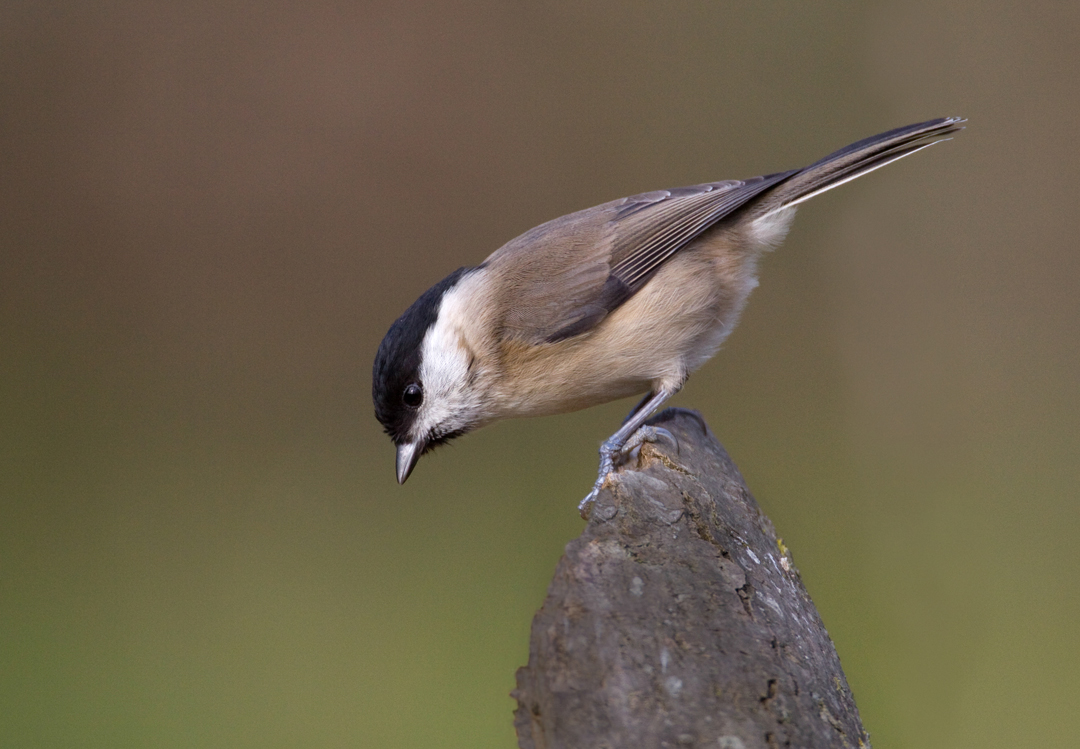
Evidence that rural wintering populations supplement suburban breeding populations
Author: Hanmer, H.J., Dadam, D. & Siriwardena, G.M.
Published: 2022
Urban areas can and do hold significant populations of birds, but we know surprisingly little about how these populations are connected with those present within the wider countryside. It has been suggested that the populations using these different habitats may be linked through seasonal movements, with individuals breeding in rural areas moving into urban sites during the winter months to exploit the supplementary food provided at garden feeding stations. However, little work has been done to test this hypothesis.
24.11.22
Papers Bird Study
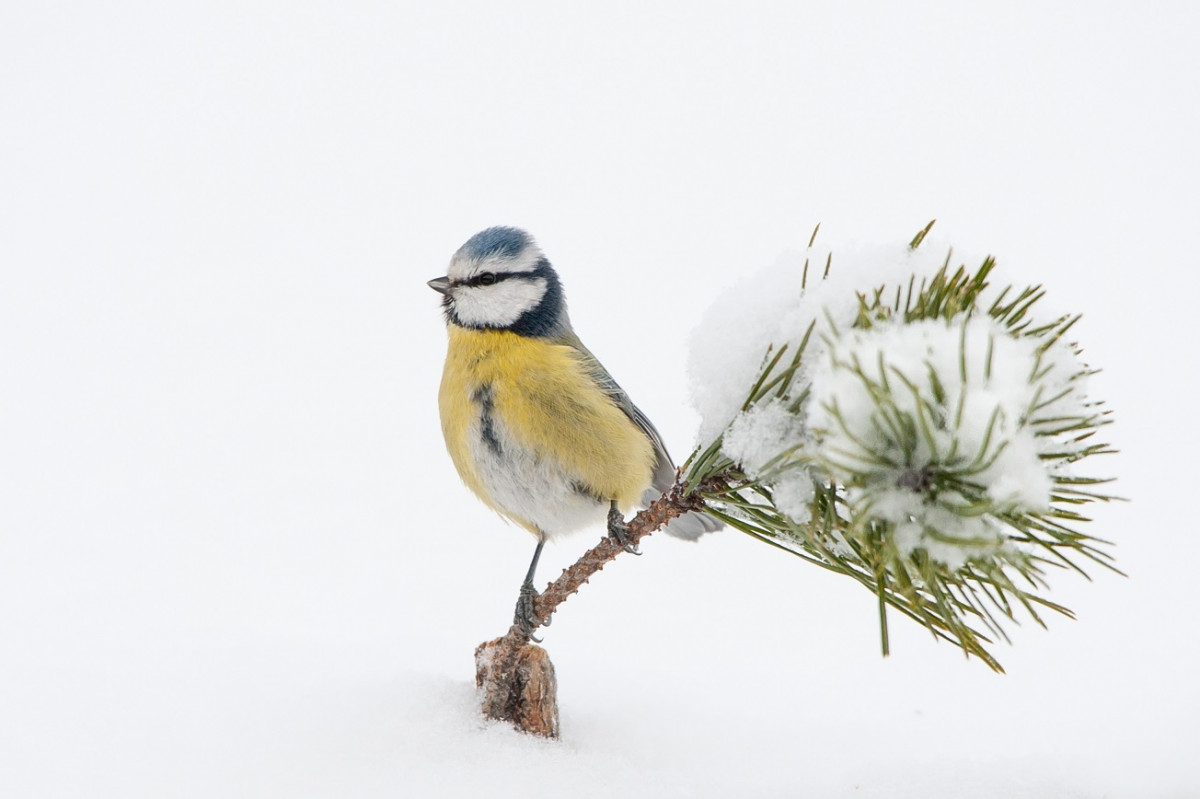
The effects of a decade of agri-environment intervention in a lowland farm landscape on population trends of birds and butterflies
Author: Redhead, J.W., Hinsley, S.A., Botham, M.S., Broughton, R.K., Freeman, S.N., Bellamy, P.E., Siriwardena, G., Randle, Z., Nowakowski, M., Heard, M.S. & Pywell, R.F.
Published: 2022
Food production and wildlife conservation are often thought of as incompatible goals, and it is rare that conservation studies consider both economics and long-term changes in ecology. However, a decade-long study at a commercial arable farm in Buckinghamshire has found that agri-environment schemes significantly increased local bird and butterfly populations without damaging food production, offering hope for the UK’s farmland birds and butterflies.
01.08.22
Papers
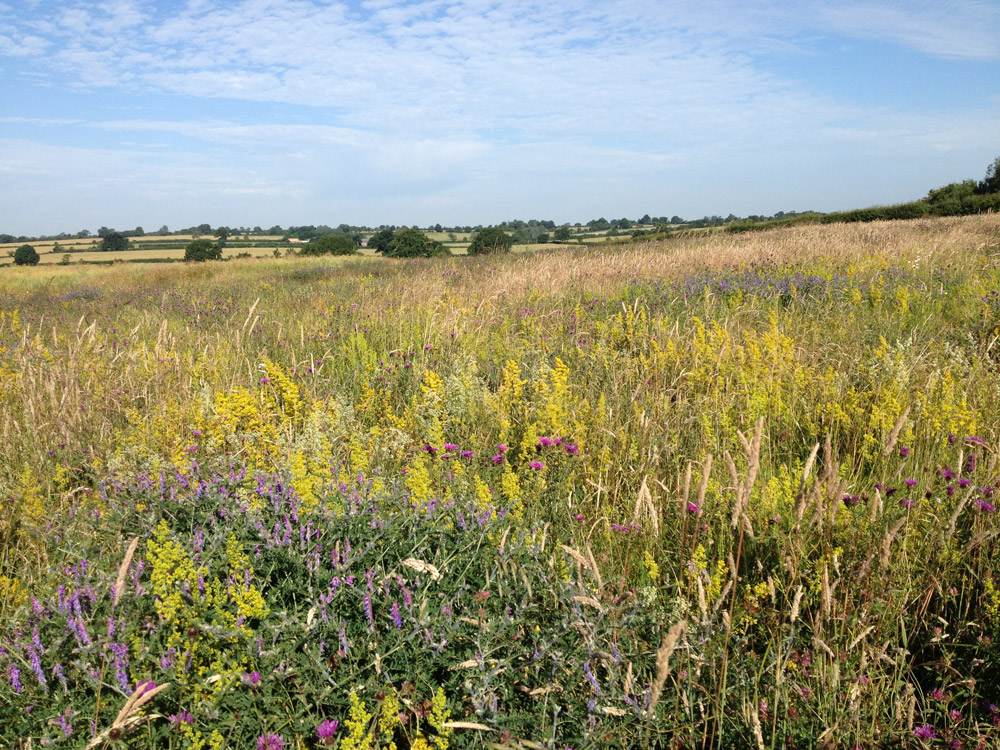
Effects of winter food provisioning on the phenotypes of breeding blue tits
Author: Plummer, K.E., Bearhop, S., Leech, D.I., Chamberlain, D.E., Blount, J.D.
Published: 2018
Our understanding of the impact of feeding wild birds is far from complete, but we are beginning to unravel the effects of providing foods at garden feeding stations. An important area of research has been to examine how supplementary foods shape populations through its impacts in individuals.
24.04.18
Papers
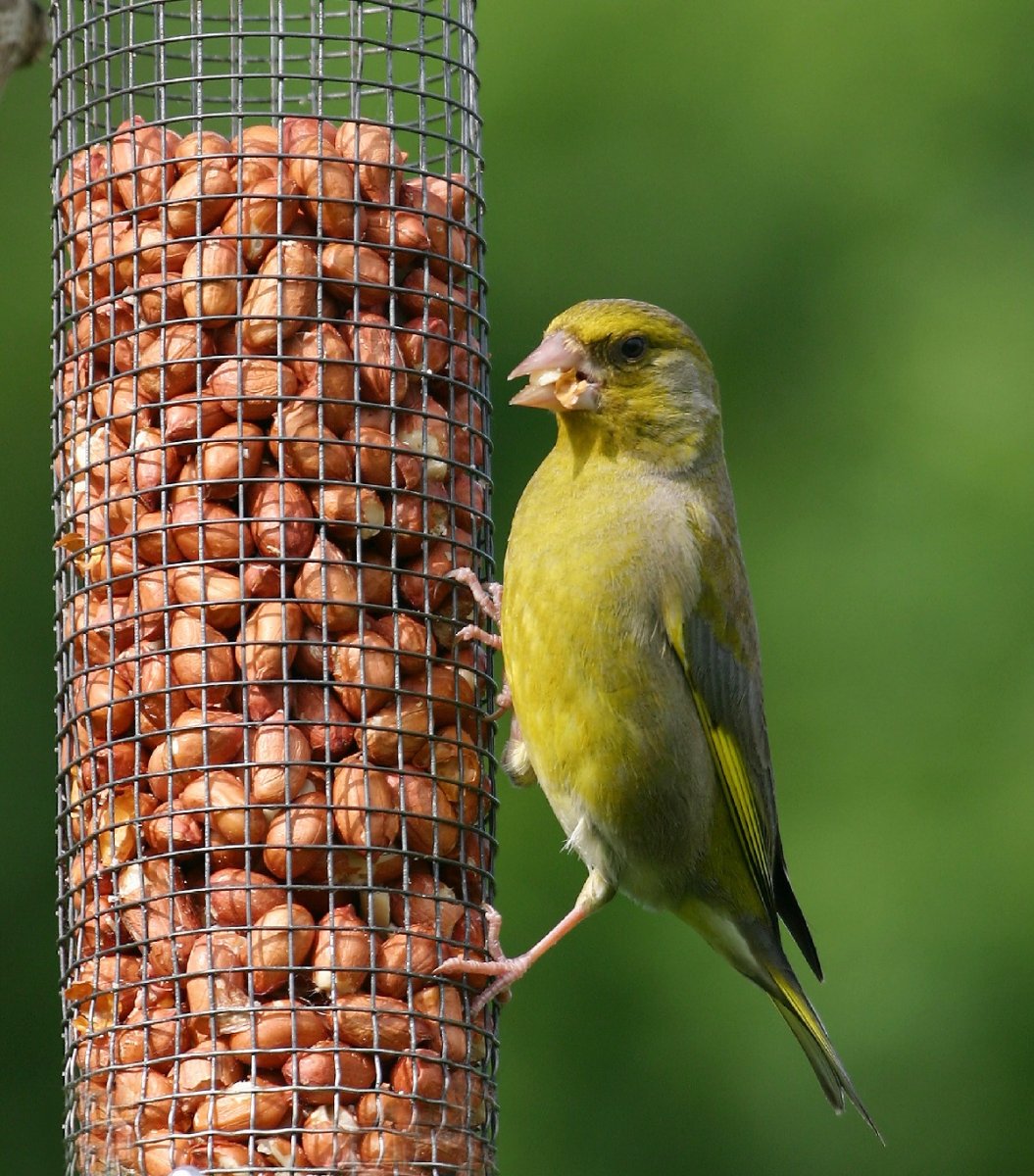
Tritrophic phenological match-mismatch in space and time
Author: Burgess M.D., Smith K.W., Evans K.L., Leech D., Pearce-Higgins J.W., Branston C.J., Briggs K., Clark J.R., du Feu C.R., Lewthwaite K., Nager R.G., Sheldon B.C., Smith J.A., Whytock R.C., Willis S.G., Phillimore A.B.
Published: 2018
The increasing temperatures associated with a changing climate may disrupt ecological systems, including by affecting the timing of key events. If events within different trophic levels are affected in different ways then this can lead to what is known as phenological mismatch. But what is the evidence for trophic mismatch, and are there spatial or temporal patterns within the UK that might point to mismatch as a driver of regional declines in key insect-eating birds?
23.04.18
Papers
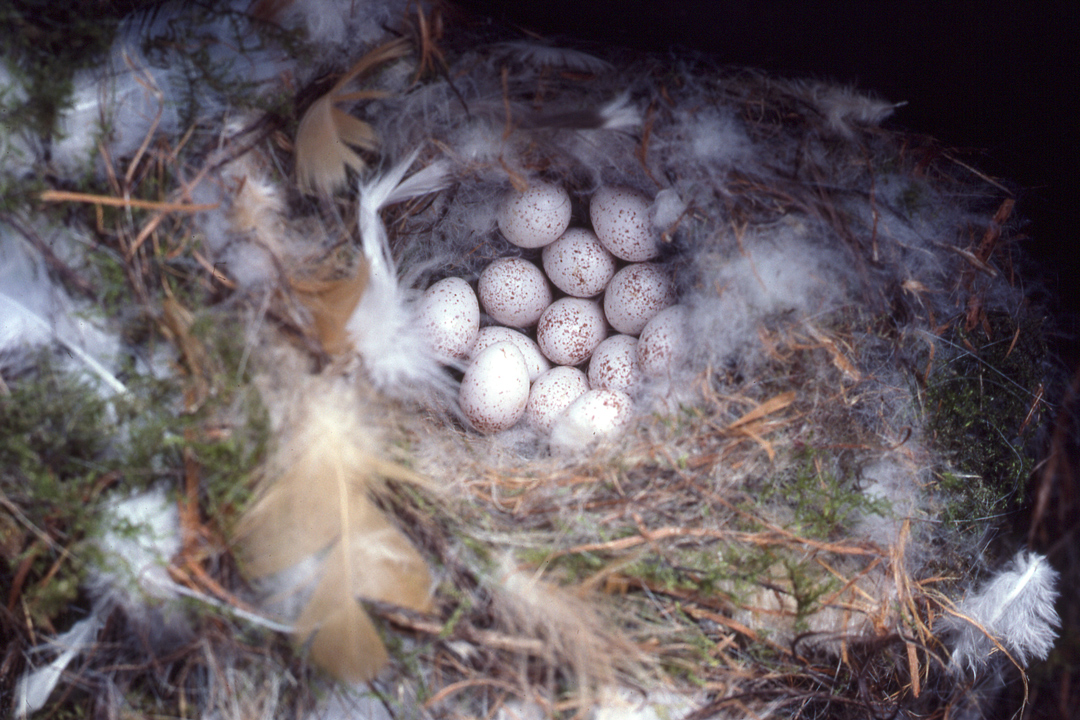
A method to evaluate the combined effect of tree species composition and woodland structure on indicator birds
Author: Dondina, O., Orioli. V., Massimino, D., Pinoli, G. & Bani, L.
Published: 2015
Providing quantitative management guidelines is essential for an effective conservation of forest-dependent animal communities. Traditional forest practices at the stand scale simultaneously alter both physical and floristic features with a negative effect on ecosystem processes. Thus, we tested and proposed a method to define forestry prescriptions taking into account the combined effect of woodland structure and tree species composition on the presence of four bird indicator species (Marsh Tit Poecile palustris, European Nuthatch Sitta europaea, Short-toed Tree-creeper Certhya brachydactyla and Blue Tit Cyanistes caeruleus). The study was carried out in Lombardy (Northern Italy), from 2002 to 2005. By using a stratified cluster sampling design, we recorded Basal Area, one hundred tree trunk diameters at breast height (DBH) and tree species in 160 sampling plots, grouped in 23 sampling areas. In each plot we also performed a bird survey using the point count method. We analyzed data using Multimodel Inference and Model Averaging on Generalized Linear Mixed Models, with species presence/absence as the response variable, sampling area as a random factor and forest covariates as fixed factors. In order to test our method, we compared it with other two traditional approaches, which consider structural and tree floristic variables separately. Model comparison showed that our method performed better than traditional ones, in both the evaluation and validation processes. Based on our main results, in deciduous mixed forest where the exploitation demand is limited, we recommend maintaining at least 65 trees/ha with DBH>45cm. In particular, we advise keeping 70 trees/ha with DBH>50cm in chestnut forests and 300 trees/ha with DBH 20–30cm in oak forests. Conversely, in more exploited oak forests, we advise maintaining at least 670 trees/ha with DBH 15–30cm in chestnut forests and 100 trees/ha with DBH 10–15cm.
01.04.15
Papers
Passerines may be sufficiently plastic to track temperature-mediated shifts in optimum lay date
Author: Phillimore, A.B., Leech, D.I., Pearce-Higgins, J.W. & Hadfield, J.D.
Published: 2016
19.05.16
Papers

